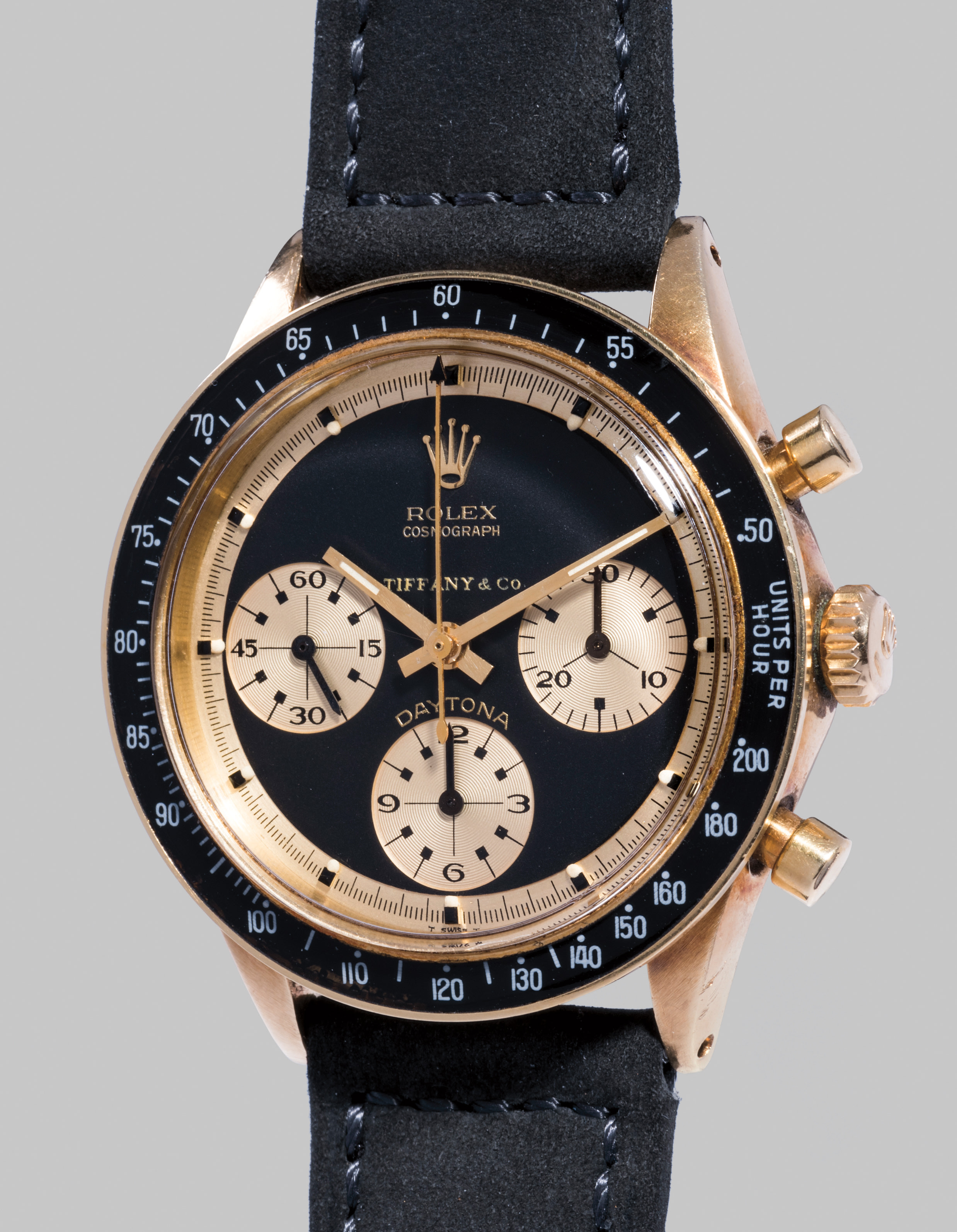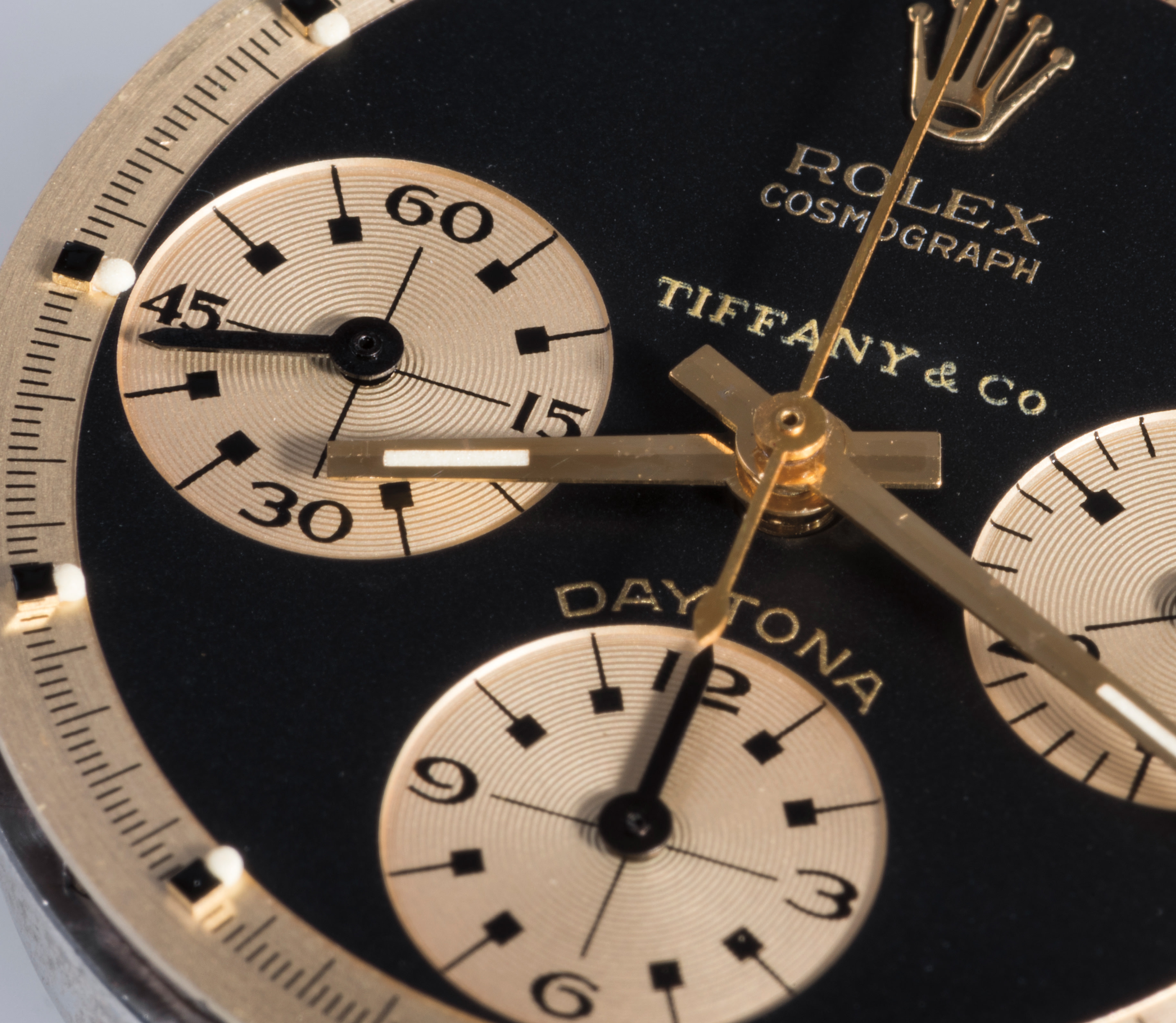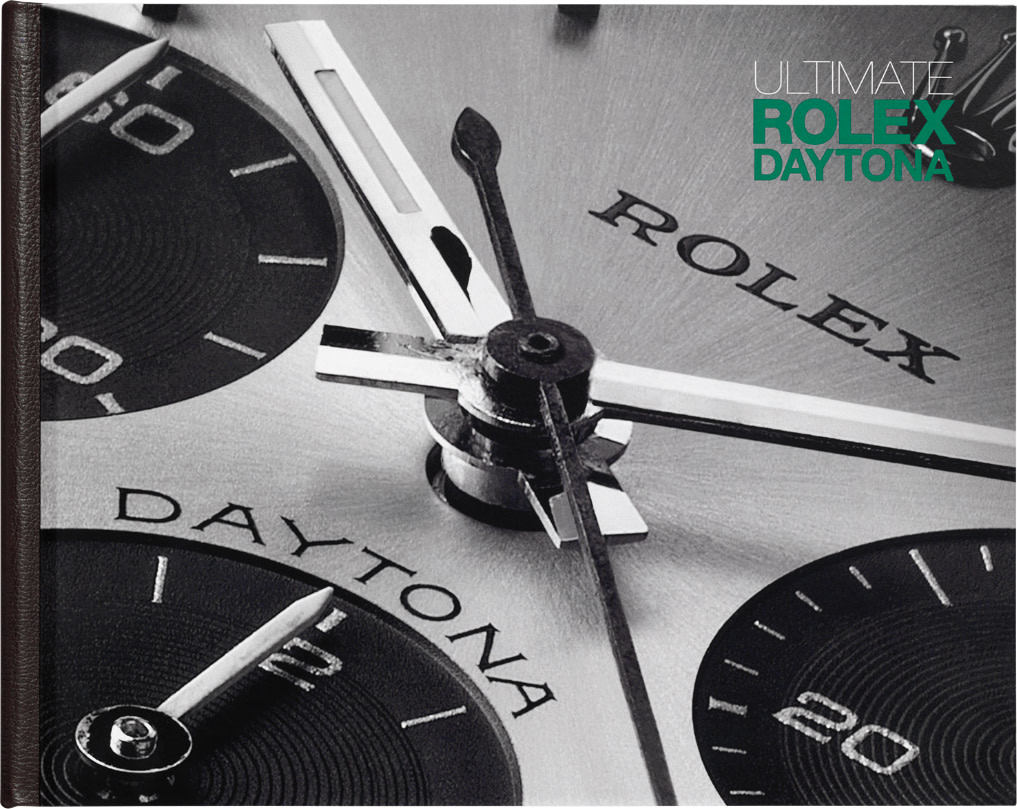







92
Rolex
Ref. 6241
Cosmograph Daytona "John Player Special Paul Newman"
A fine, rare, important and probably unique 14k yellow gold chronograph wristwatch, retailed by Tiffany & Co.
Full-Cataloguing
Only known through literature, the present watch is a highly important example of the reference 6241 "John Player Special". Its most defining feature is, without a doubt, the coveted Tiffany & Co. signature on the dial. This watch is the only known and correct "John Player Special Paul Newman" retailed by Tiffany & Co., which is absolutely correct as scholarship suggests that American imported Rolex watches were cased in 14k yellow gold. The signature is most notably stamped significantly lower than the Rolex Cosmograph text, emphasizing the retailer's importance.
Its freshness and beauty places the watch among the most important and valuable reference 6241s to ever grace the market. Only a handful of yellow gold reference 6241s with "John Player Special" dials are known today, and to discover one with the retailer's signature is nothing short of spectacular.
Nicknamed "John Player Special", the present watch is an exceedingly rare variant of the “Paul Newman” model. The origin of the name dates back to 1972, when John Player & Sons sponsored the Lotus Formula One team, which emblazoned the cigarette maker’s logo on its cars. Clad in black and gold livery to match John Player & Sons’ corporate colours, the Lotus automobile became an instant hit and icon. Today, the automobile is considered amongst the most attractive and elegant race cars ever designed.
Donning the same colors as the Formula One car, the "John Player Special Paul Newman" shares its name with the racing vehicle. While the watch was conceived some years before the car and has no relation to the sporting event, the similarities between the two are absolutely uncanny, from the black and gold graphics, to the intricate trim and details.
The dial itself is preserved in astounding condition. Free of imperfections, it features round and complete luminous dots that are consistent in color, even when viewed under the telling rays of a black ultraviolet light. The hands furthermore match the numerals, and both display warm yellow patina.
The case, too, is preserved in excellent condition with a very sharp 14k hallmark and gold marks beneath the lugs. Most striking are the numbers scratched beneath the lugs, which scholarship suggests are an internal code for Tiffany, providing another seal of confidence for collectors and scholars.
To add another element of surprise and delight, the present watch is prominently illustrated in Ultimate Rolex Daytona by Pucci Papaleo on page 64. Its image adorns one third of the page, proudly displaying the details of the dial, along with details of the case, all for the viewer's pleasure.
Reference 6241 was produced from 1966 and 1969, which was a relatively short production period. In fact, it is among the rarest Daytona references ever produced. Research suggests that less than 300 examples were cased in 18k yellow gold, with even fewer cased in 14K yellow gold. From those, a mere fraction were fitted with Paul Newman dials. Consequently, the freshness, "correct" tells and rarity of the present watch renders it one of the most exciting, astonishing and beautiful examples of reference 6241 to ever appear in the public eye.
Rolex
Swiss | 1905Founded in 1905 England by Hans Wilsdorf and Alfred Davis as Wilsdorf & Davis, it soon became known as the Rolex Watch Company in 1915, moving its headquarters to Geneva in 1919. Like no other company, the success of the wristwatch can be attributed to many of Rolex's innovations that made them one of the most respected and well-known of all luxury brands. These innovations include their famous "Oyster" case — the world's first water resistant and dustproof watch case, invented in 1926 — and their "Perpetual" — the first reliable self-winding movement for wristwatches launched in 1933. They would form the foundation for Rolex's Datejust and Day-Date, respectively introduced in 1945 and 1956, but also importantly for their sports watches, such as the Explorer, Submariner and GMT-Master launched in the mid-1950s.
One of its most famous models is the Cosmograph Daytona. Launched in 1963, these chronographs are without any doubt amongst the most iconic and coveted of all collectible wristwatches. Other key collectible models include their most complicated vintage watches, including references 8171 and 6062 with triple calendar and moon phase, "Jean Claude Killy" triple date chronograph models and the Submariner, including early "big-crown" models and military-issued variants.